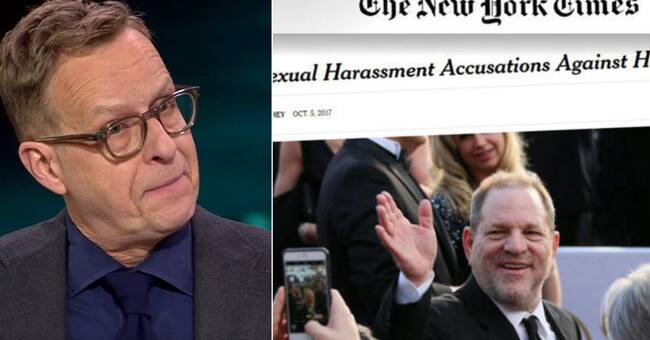The last time there was much talk
about metoo in the Swedish debate was in late summer when Aftonbladet's former cultural director toured the media circus and presented this revolutionary global liberation movement as a kind of folly (to divert attention from the unique madness she herself committed in her columns).
So despite the fact that this book comes late - a year after the original, which is a long time for news material - it manages to come at just the right time in a Swedish context.
Forget the attempts by Linderborg and other explaners and post-constructors to twist history according to their own purposes.
This is what metoo was really about - portrayed through the news story that triggered the whole tidal wave.
New York Times reporters Jodi Kantor and Megan Twohey
tell how they worked journalistically to uncover the filmmaker Harvey Weinstein's recurring sexual abuse of women in his sphere of influence.
As was the case with our Swedish Kulturprofilen, it was a scandal that was already rumored, and which was considered a public secret in consecrated circles.
So the work is very much about proving and securing testimonies from good sources, persuading them to come forward with names.
To find verifiable details and verify them.
In this way, the Contract of Silence also becomes a story about what journalism is, how it differs from opinion, spreading rumors and beliefs.
A much-needed public education in the era of online publicity and influencer journalism.
There is also an intelligent and balanced critique of the complications and weaknesses of the meto-movement and meto-journalism.
The last third of the book is
devoted to the related story of Brett Kavanaugh, who during her candidacy for the US Supreme Court was accused of attempted rape by a high school acquaintance, Christine Blasey Ford.
It is not Kantor and Twohey's own investigation, the text here becomes more rhapsodic, but has an important function in the book.
The authors read and register the treatment, tone of voice, language use, the public spectacle around such an accusation directed straight into the center of power.
And they find that something has changed.
Changed for the better.
Men's sexual abuse of women is
not swept under the rug as easily.
Women's accusations are not dismissed as lightly.
This is, of course, a kind of heroic tale - salty reporters led by even saltier editors.
Sacrifice who bravely steps up to a high personal price, the invulnerable sinner who suddenly becomes vulnerable.
In a not entirely accurate Swedish translation, the language has become a bit more of an old-fashioned youth book than hard-boiled New York Times prose (and some details in fact are directly mistranslated).
But it can be tolerated, this book should be read for the sake of the story, not the style.

